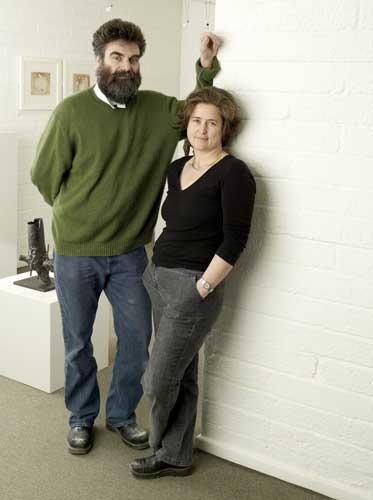Close-up: Rungwe Kingdon & Claude Koenig
When Damien Hirst goes large, who does he turn to? His 'hands'

Your support helps us to tell the story
From reproductive rights to climate change to Big Tech, The Independent is on the ground when the story is developing. Whether it's investigating the financials of Elon Musk's pro-Trump PAC or producing our latest documentary, 'The A Word', which shines a light on the American women fighting for reproductive rights, we know how important it is to parse out the facts from the messaging.
At such a critical moment in US history, we need reporters on the ground. Your donation allows us to keep sending journalists to speak to both sides of the story.
The Independent is trusted by Americans across the entire political spectrum. And unlike many other quality news outlets, we choose not to lock Americans out of our reporting and analysis with paywalls. We believe quality journalism should be available to everyone, paid for by those who can afford it.
Your support makes all the difference.Rungwe Kingdon and Claude Koenig are responsible for some of the world's greatest works of art – sculptures that tour the most prestigious galleries and fetch dizzying sums in the auction houses of London and New York – yet outside the whitewashed walls of the art world, their names are seldom heard. "That's because we're not artists," says Kingdon. "We are founders."
At Pangolin Editions, their foundry in Gloucestershire, the duo help some of art's biggest names realise their visions. Recent projects include Damien Hirst's Virgin Mother, a 35ft bronze of a pregnant woman that dominated the courtyard of London's Royal Academy of Arts in 2006.
Koenig is happy working in the shadows ("You could say we are Hirst's hands," she says) while Kingdon compares his foundry to an orchestra: "When you listen to Beethoven you don't wonder who's the first violinist. We're comfortable in that role."
The husband-and-wife team met at art school; sculpture had fascinated them both as children. "Claude's first casts were lead poured into snails' shells," Kingdon says. "I'd cast lizards in plaster. It was like making your own fossils – it was like magic."
Pangolin is best known for its bronzes but has just finished working with 50 artists to produce silver sculptures. Their exhibition, opening tomorrow, includes an aborted foetus by Antony Gormley and a Hirst called Grotesque Unicorn, which includes a flayed bull's head with a swordfish blade that looks like a chainsaw.
The work is likely to be worth more than its weight in silver should it be sold (Hirst netted a record £111m at a Sotheby's auction of his new work in September), but the huge sums "his" works often fetch aren't galling for Kingdon. "Bring it on!" he says. "Everybody in the art world thrives in the light that shines on Hirst. Long may it continue."
'Sterling Stuff II' is showing at Kings Place, London N1, from tomorrow to 18 January (020 7520 1490, www.kingsplace.co.uk)
Join our commenting forum
Join thought-provoking conversations, follow other Independent readers and see their replies
Comments